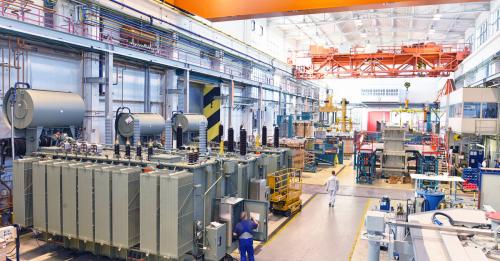Since April, over 1,000 Alabama coal miners have been on strike. The workers say their employer, Warrior Met Coal, has denied them fair wages, good insurance, and reasonable work schedules and conditions, all while paying millions of dollars in fees to Wall Street firms and bonuses to upper management. Since 2016, when Warrior Met Coal took ownership of the mine, workers have seen lower hourly wages, less paid time off, and decreased medical coverage, and both tenured and new employees lost their pensions. Despite various hurdles, the miners’ union is prepared to continue its strike as an expression of workers’ constitutional rights.
The Alabama strike is just one of many recent labor disputes across the country, including those at Kellogg, John Deere, Nabisco, and Kaiser Permanente—leading some pundits to dub this past October as “Striketober.” Meanwhile, worker wages were up 1.5% in the third quarter of 2021 (with an 8.1% increase for restaurant, bar, and hotel workers and a 5.9% increase for retail workers), and record numbers of workers are quitting based on their confidence that they will find better jobs—a phenomenon some are calling “the Great Resignation.”
All these trends signal a surge in worker power across different industries. But ironically, workers’ newfound leverage may accelerate an impending threat to their jobs: automation. It’s vital, then, for workers to use the current moment to press for long-term protections to secure their careers and livelihoods.
Why workers have leverage right now
There are at least two causes for newfound worker leverage. First, employers are in dire need of workers, and have raised wages as a result. While roughly 10 million people are needed to fill both low-wage and high-skilled positions, only 8.4 million Americans are actively searching for jobs. The political right blames expanded unemployment benefits and stimulus checks for the labor shortage; the left blames low wages, poor working conditions, and widespread worker burnout.
The language of “labor shortages” is politically charged and often misses the complexity of how job openings, separations, and quit rates differ across various industries. Nevertheless, it is true that the weirdness of the current economy (Moody’s chief economist called it an “Alice-in-Wonderland job market”) tilts in favor of workers, as many employers are forced to improve wages and benefits to avoid being short-staffed.
A second key factor in boosting worker power is the amount of household savings produced through stimulus checks combined with less spending on travel and other large expenses during 2020. This has led to upticks in monthly disposable income and household net worth for households in each quintile, with Pew reporting that personal income in the second quarter of 2021 is up “an annualized inflation-adjusted rate of 4.1% from the last full quarter preceding the coronavirus pandemic.” Notably, however, this aggregate savings bump is not equal across racial and ethnic groups, with a joint NPR, Harvard, and Robert Woods Johnson Foundation survey finding that “at least four in ten Latino, Black, and Native American households report using up all or most of their household savings” during the pandemic. Nevertheless, the aggregate personal savings bump has provided many workers who are in between jobs with some breathing room as they hold out for better opportunities.
While increased savings provides a small cushion, it is likely that this worker advantage will not last long, particularly given persistent inflation. Likewise, as supply chain issues are ironed out and consumer demand (particularly for durable goods) stabilizes, employers and employees will establish a new equilibrium, one that will likely again tilt toward employer power at the expense of workers. And though higher wages and more flexible hours are worthy goals, workers should use the potentially narrow window of power they have right now to ensure their job security against a looming threat: the new era of automation.
The robots are coming for workers’ jobs
During their labor dispute this year, Kellogg reportedly threatened its workers that it would “send additional jobs to Mexico.” The issue of offshoring work was also a driver of the Nabisco dispute.
While President Joe Biden vowed to be the “strongest labor president” the nation has ever had, some commentators argue that his progressive policies are driving up labor costs and resulting in accelerated outsourcing and automation, while also threatening domestic tech jobs through more generous immigration policies. Of course, arguments about the effects of the administration’s agenda are often politically motivated for both supporters and critics, and voices on the left such as the Center for American Progress are quick to counter-argue that the agenda will save jobs by discouraging offshoring. Meanwhile, a recent Wall Street Journal article reports that many CEOs are responding to supply chain weaknesses by pushing to onshore more production, even if it is less efficient. Another recent thread in this debate is the concept of allyshoring—developing supply chains with some of America’s known allies, with benefits of not only increasing the reliability of critical supply chains across sectors but also restoring foreign policy ties.
The balance between onshoring and offshoring may ebb and flow with changes to the political economy, but one thing that is certain: Automation will continue to increase across sectors regardless of who is in office. A recent Associated Press article highlighted how the pandemic accelerated automation in the past year, as robots cannot get sick nor will they request time off—a trend that replaces service sector jobs once considered safe due to demand for human contact. “Striketober” is also a likely contributor to this acceleration; as Jeff Burnstein, president of the Association for Advancing Automation, explained, “While advances in robot technology, ease of use, and new applications remain key drivers in robot adoption, worker shortages in manufacturing, warehousing, and other industries are a significant factor in the current expansion of robot use that we’re now seeing.”
Similarly, a recent Brookings analysis detailed three reasons why the pandemic is expected to accelerate the pace and scope of automation: (1) the desire of companies to cut costs by transitioning from human workers to machines for automatable tasks; (2) stalled international travel and the United States-China trade war; and (3) increased labor demand and labor costs resulting from the reshoring of jobs. Further, some businesses, particularly fast food restaurants, found that automated operations were attractive to consumers because they reduce the need for human contact with food during the preparation process. In Ohio, Lee’s Famous Recipe Chicken installed an automated voice system in several locations to take orders, eliminating the need for a person at the drive-through window.
While automation provides cost savings and increased production opportunities for businesses, it has varying impacts on workers, from increased productivity on the positive side to eliminating the need for humans to complete routine tasks on the negative. As expected, the impact of automation on workers is not uniform across racial groups: “Black and Latino workers account for 13% and 18% of the U.S. labor force, respectively, but are overrepresented in jobs with a high risk of being eliminated or significantly changed by automation,” Brookings found.
For these vulnerable workers to thrive in a future of automation, strategic adjustments in union participation and activism, education, and worker training will be necessary to protect current jobs and create additional pipelines to jobs that are less susceptible to automation. And since firms frequently recapture the costs of training programs, either partially or fully, through productivity gains unlocked by upskilled workers, it is only right that firms increase their investments in training initiatives. This is where workers and unions can use today’s leverage and momentum to ensure continued employment into an uncertain, automated future.
Now is the time for workers to secure long-term prosperity
Since the earliest days of the knowledge economy, pundits have called for workers to refit themselves for today’s jobs. But as our team recently told workforce development leaders in Alabama, we cannot just tell workers to “learn to code,” thereby shifting all the expense and risk onto employees while all the gains from upskilling flow to employers. Instead, employers themselves need to shoulder the responsibility and at least some of the cost to help equip their workers for tomorrow’s jobs in an era of automation.
As organized labor celebrates well-deserved victories in Striketober and beyond, labor activists need to ensure that short-term wins don’t lead to long-term losses. Given that the current moment of worker leverage will be fleeting, it is imperative that the labor movement makes the most of this opportunity by pushing employers to cover the costs of upskilling, thereby ensuring long-term job security for workers.









Commentary
Workers must use their newfound leverage to protect their careers from automation
December 10, 2021